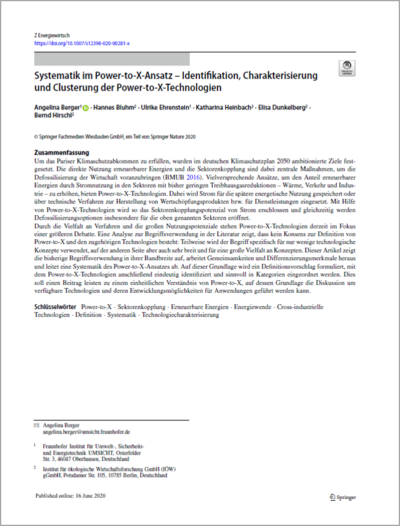Systematics in the Power-to-X Approach Identification, Characterization and Clustering of Power-to-X Technologies
In order to fulfil the Paris Climate Protection Agreement, ambitious targets were set in the German Climate Protection Plan 2050. The direct use of renewable energies and sector coupling are two of these central measures to forward the defossilisation of the economy. Promising approaches to increase the share of renewable energies in the heating, transport and industrial sectors are offered by power-to-x technologies. Within these technologies, renewable based electricity can be stored for a later energetic use or can be used in technical processes to produce value-added products or to provide services. This exploits the sector coupling potential of electricity and at the same time opens up for the above-mentioned sector’s defossilisation options.
Due to the diversity of processes and the great utilization potential, power-to-x technologies are currently the focus of a larger debate. An analysis of the terminology “power-to-x” in research publications shows that there is no consensus on the definition of power-to-x and the associated technologies: Partially the term is used quite narrowly and for only a few technological concepts, sometimes it is used very broadly and for a large variety of concepts. This article gives an overview about the present spectrum in the use of the term “power-to-x”, identifies similarities and differentiations and derives a systematic of the power-to-x approach. Based on this, a definition proposal is formulated with which power-to-x technologies can be unambiguously identified and meaningfully classified into categories. This should contribute to a uniform understanding of power-to-x, on the basis of which the discussion about available technologies and their development possibilities for applications can be conducted.



